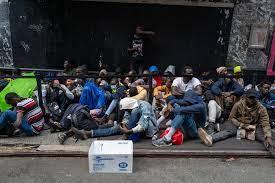A $30,000 homebuyer assistance program ignited public outrage. Initial reports suggested the grant targeted only non-U.S. citizens in Oregon.
This revelation led to heated debates on social media and news programs. The controversy highlights the ongoing tension surrounding immigration and housing policies in America.
How did misinformation spread so quickly?

A flyer circulated online contained erroneous information about the grant’s eligibility. Social media amplified the misleading content within hours.
News outlets picked up the story, further fueling public anger. Studies show that false information spreads six times faster than accurate news on social media platforms.
What are the real eligibility requirements?

The program actually aims to assist all eligible Oregonians. Applicants must be state taxpayers with pre-approved mortgages.
They need to meet two out of five specific risk factors. These factors include experiences of discrimination and socioeconomic challenges.
Why target disadvantaged communities for housing aid?

The grant program stems from a state initiative to promote economic equity. It focuses on building stability and wealth-building opportunities.
Disadvantaged communities often face significant barriers to homeownership. Research shows that homeownership rates among minorities are 30% lower than those of white Americans.
Oregon’s Housing Crisis: A Deeper Look

Oregon’s median home price stands at a staggering $519,900. This figure puts homeownership out of reach for many residents.
High interest rates compound the affordability issue. Experts predict that without intervention, homeownership rates in the state could drop by 5% in the next decade.
How do language and citizenship affect housing?

The grant program considers factors like English proficiency and citizenship status. These elements can significantly impact an individual’s ability to navigate the housing market.
Studies indicate that limited English proficiency can reduce homeownership chances by up to 20%.
Public Reaction: Anger, Confusion, or Both?

The initial reports sparked intense public backlash. Many expressed frustration over perceived preferential treatment for non-citizens.
Social media platforms saw a 500% increase in housing-related discussions. This reaction underscores the emotional nature of housing and immigration debates.
What role do nonprofits play in housing?

Nonprofit organizations often bridge gaps in government housing assistance. They can provide targeted support to underserved communities.
However, their work sometimes becomes entangled in broader political debates. Nonprofits contribute to about 30% of affordable housing solutions nationwide.
Clarification and Apology: Too Little, Too Late?

The organization behind the grant issued a public apology and clarification. They attributed the misinformation to an error by a social media consultant.
However, the damage to public perception had already occurred. Studies show that retractions reach only about 10% of the original misinformation’s audience.
What’s next for housing assistance programs?

This controversy may lead to increased scrutiny of housing assistance initiatives. Policymakers might push for clearer communication about eligibility criteria.
Future programs could face challenges in balancing targeted assistance with public perception. The incident serves as a cautionary tale about the power of information in the digital age.

